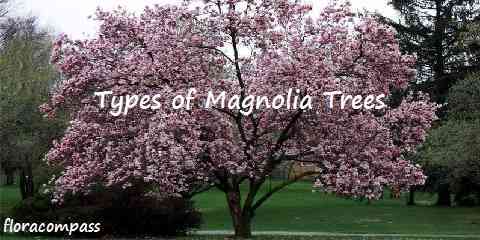
Magnolias are stupendous plants that give excellent blooms in shades of purple, pink, red, cream, white and even yellow. Magnolias are renowned for their blossoms; however, a few types of magnolia trees are acknowledged for their lavish foliage as well.
Kinds of magnolia trees incorporate a huge scope of plants in different sizes, shapes and hues. Despite the fact that there are various sorts of magnolia, a large number of the most well-known varieties are delegated evergreen or deciduous. Read on for a little sample of a wide range of kinds of magnolia trees and bushes.
Magnolia Tree Types
On deciduous kinds, the blossoms open in late-winter before the leaves show up, rising up out of vast pussy-willow-like buds that set amid the past developing season and stay all through fall and winter. Evergreen writes blossom heaviest amid the change from spring to summer. Yet, don’t be shocked if any types of magnolia tree re-sprouts in the mid-year or late-summer. It’s normal for sporadic sprouts to show up on new growth.
Here are some of the most well-known types of magnolia trees:
Southern Magnolias (Magnolia grandiflora)
Southern (Magnolia grandiflora) is a radiant tree developed for its polished green leaves and dazzling white blooms. Amazingly adaptable for an extraordinary decorative, southern magnolia flourishes in the South, as well as in the Pacific Northwest.
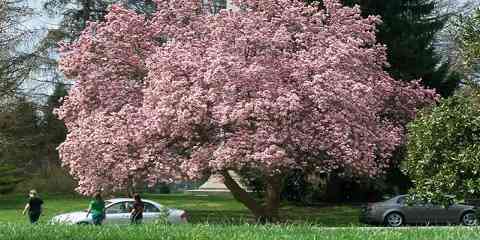
Star Magnolias (Magnolia stellate)
The star (Magnolia stellata) is known as a little tree or expansive bush, types of magnolia tree that is local to Japan. The propensity is oval with low branches and close-set stems. There are numerous cultivars accessible, for example, Centennial, which develops to 25 feet and has white blossoms with a pink tinge; Rosea, which has pink blooms that blur to white; or Royal Star, which achieves a develop stature of 20 feet and has pink buds with white blossoms.
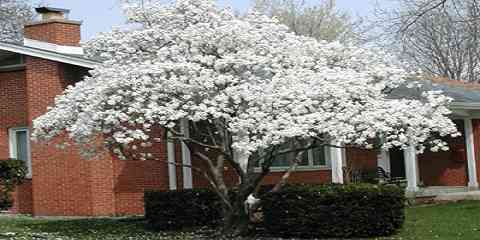
Saucer Magnolias (Magnolia soulangiana)
the cross reproducing of Magnolia liliflora and Magnolia denudata to make the delightful tree we currently known today as the saucer (Magnolia soulageana). Reproduced by Soulange-Bodin in the 1820s, by 1840 the saucer magnolia was pined for by planters around the globe and sold for about $8 per seedling, which was an exceptionally costly cost for a tree back then. Today, the saucer magnolia is as yet a standout amongst the most mainstream trees in the U.S. also, Europe.
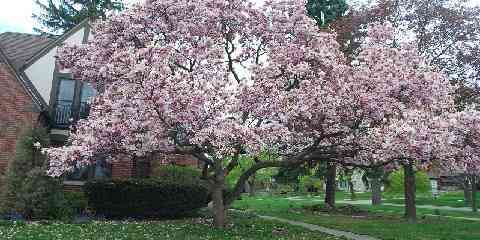
Loebner Magnolias (Magnolia loebneri)
This little tree is a cross of M. kobus and M. stellata . It has star-molded blooms (3 to 5 crawls over) with 10 to 14 limit white petals, in some cases tinted in lilac-purple or pale pink. The blooms are fragrant and show up before the leaves in mid-spring. Loebner magnolia develops to 30 feet tall.
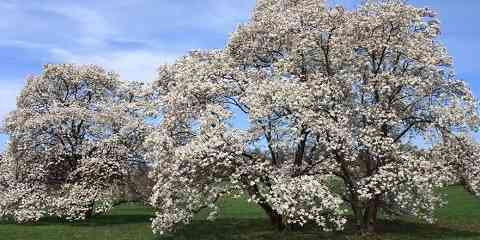
Magnolia Tree Facts
There are 3 facts about magnolia tree that people usually do not aware, such as:
-
Magnolia trees even existed before honey bees, so they depend on scarabs for fertilization. Rather than nectar, the blooms deliver extensive amounts of dust that the bugs use for nourishment.
-
The most established types of magnolia tree on the grounds of the White House are two southern magnolias planted in the vicinity of 1829 and 1837 by Andrew Jackson, in memory of his better half, Rachel, who passed on two weeks after Jackson won the race.
-
Magnolia blooms are really made out of “tepals,” a mix of sepals and petals comparable fit as a fiddle, practically identical to water lilies.